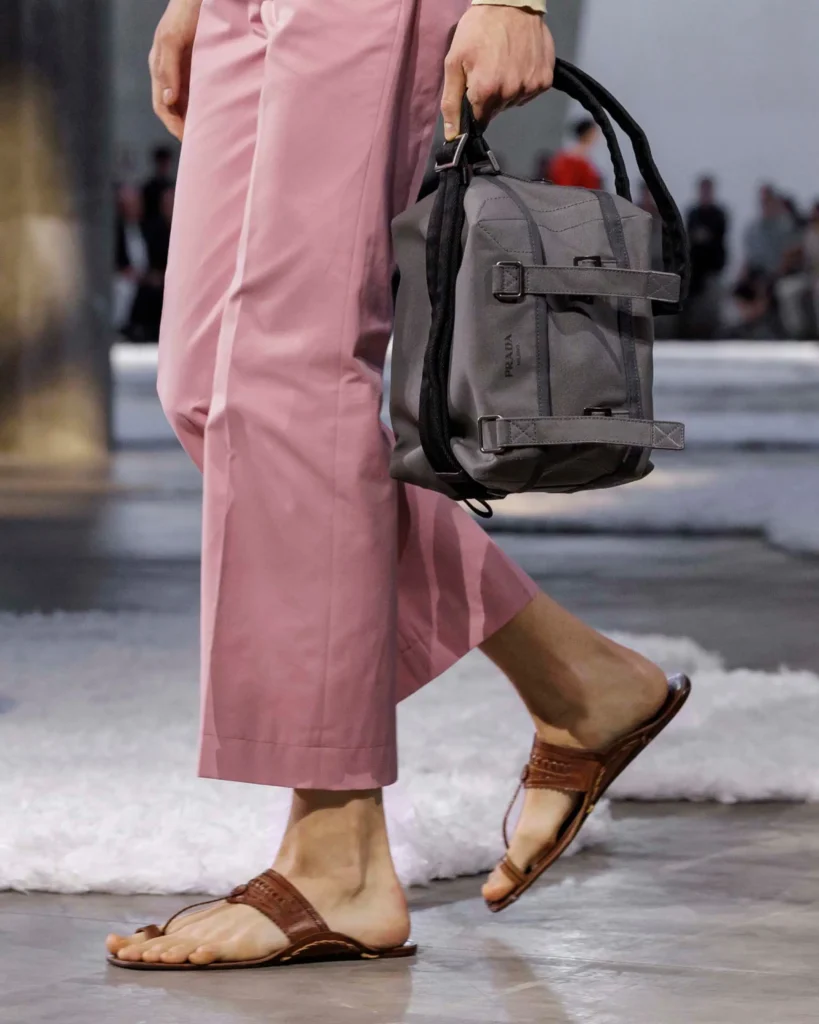Kolhapuris, India’s humble yet enduring leather sandals, have found their way onto the global runway, having made their debut on the Prada Men’s Spring/Summer 2026 show, a move that hasn’t gone unnoticed by fashion insiders and cultural commentators online.
Some observers see echoes of the recent “Scandinavian-scarf” discussion and are debating whether this is cultural inspiration or simply stylistic borrowing. Earlier this year, Alia Bhatt appeared at the Met Gala in a custom Gucci sari—the Italian house’s first interpretation of this South Asian classic. When Gucci’s Instagram caption referred to the look as a “gown,” it prompted conversation among Desi audiences about how best to describe and credit traditional silhouettes on global red carpets.
Prada’s sleek spin on the Kolhapuri sandal—right down to the looped leather ring slipped into each show invite—speaks for how Indian craftsmanship keeps seeding ideas on the world’s most influential runways.
But, first, let’s look at the history of these iconic slip-ons. Born out of the homes of artisans from Maharashtra’s Kolhapur region, they date back as far as the 12th century. Made to last with premium quality leather, they are both comfortable and chic. Indians, celebrities and the average crowd alike, don Kohlapuris on the daily, enjoying their versatility that goes with every outfit.
The unadorned Kolhapuri, same as it has always been, suddenly appearing on the foot of a Prada model at a show in Milan, only proves that true craftsmanship requires no embellishment to command attention.


From Dior’s 2023 show in Mumbai that spotlighted Indian embroidery ateliers, to echoes of kantha stitches, chikankari, and mirror work seen in various collections all over the globe, South Asian artisanship is expanding beyond borders.




